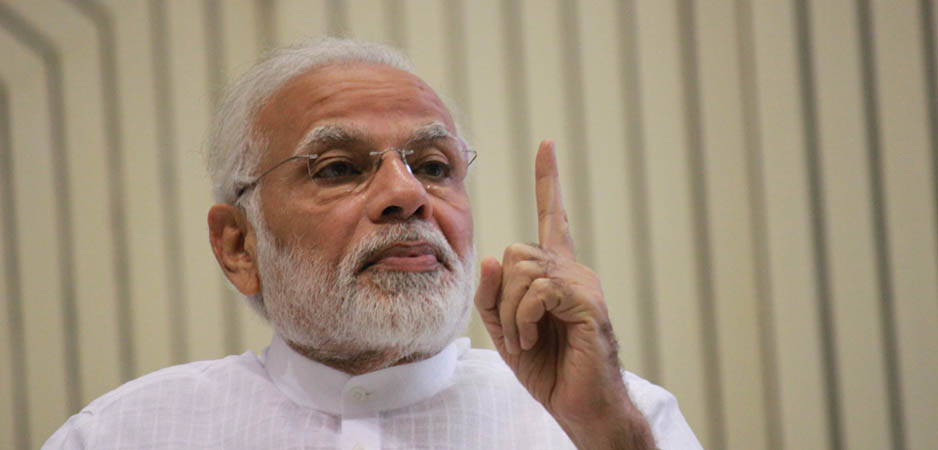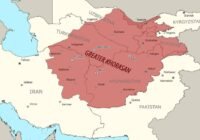India’s economy faces big trouble as jobs dry up, consumption falls and industrial production declines.
Prima facie, the gods are in their heavens and all is hunky dory in India. Prime Minister Narendra Modi has just presided over the Vibrant Gujarat Global Summit. Heads of five world powers — Denmark, Czech Republic, Uzbekistan, Malta and Rwanda — flew over for a pilgrimage to the prime minister’s native state. The media dutifully reports that over 28,600 memorandums of understanding were signed and would lead to 2.1 million jobs.
It is the purported success of the Gujarat model that enabled Modi to ride in a victory chariot to the Delhi throne in 2014. Like the Marathas, he knocked out a decaying dynasty and people expected him to bring about “achche din,” Hindi for good days. Has that transpired?
It depends on whom you talk to. Pro-establishment economists proclaim that the Modi government has unleashed the “best years” of the Indian economy. Economists opposed to the government declare that it has “taken a quantum jump in the wrong direction.”
The best guides to understand the Indian economy are government figures themselves and the accounts of ordinary people from around the country. They may not reveal bubonic plague and the death of the firstborn, but offer irrefutable evidence of achche din being as far away as the broad uplit sunlands promised by gallant Brexiteers.
FORMAL STATISTICS REVEAL ANEMIC PRIVATE SECTOR
On January 9, the authors analyzed the economic pain India is currently experiencing. The new economics figures released recently vindicate the authors. The biggest warning sign has come from the rural sector. For years, rural retail inflation was higher than urban retail inflation. Since July 2018, that has reversed. Rural distress is weakening consumption.
Last month, the minutes of the Reserve Bank of India (RBI) recorded that the economy was “weighed down by moderation in private consumption and a large drag from net exports.” “Growth in tractors sales — an indicator of rural demand — turned negative” in September as per the RBI. This fall in demand has led to a contraction in the industrial sector.
The Index of Industrial Production (IIP) figures for November 2018 were published on January 14. They record a contraction of -0.4% for November. Non-durable goods such as food, clothing and footwear have suffered the greatest fall. Since the 2000s, savings and investment have been falling. Last year’s Economic Survey, a government analysis of the economy, acknowledged this fact. This means there will be less money to invest in roads, factories and industrial production in the years ahead.
The story of any economy is better revealed by secondary indicators instead of primary ones. If the latter are dodgy, the former are diabolical. Auto sales fell during Diwali season, the peak season for big purchases in India. It is this statistic that set your authors to start worrying about the Indian economy three months ago. Figures released in January confirmed their fears. Weak industrial credit growth, weak personal credit growth, negative food wholesale price index and plunging private investment in infrastructure reveal that the economy is on its knees, if not its back.
GRASSROOTS REPORT CARNAGE IN INFORMAL SECTOR
Earlier this year, the authors explained how the informal sector did not show up “in direct taxes or other official economic data.” Demonetization and imposition of the goods and services tax (GST) have wreaked havoc on this sector. Businesses have closed, jobs have dried up, demand has declined and now manufacturing is suffering too.
The takeover of the retail space by online American giants has hurt too. Now, people use Amazon or Walmart-owned Flipkart to buy everything from smartphones to refrigerators. This has led to thousands of shops closing down and put many more thousands who worked in such shops on the streets. Urban India can certainly buy things for cheaper, but the ongoing destruction of the little guys is leading to catastrophic job losses.
The Centre for Monitoring Indian Economy (CMIE) estimates that 10 million jobs were lost in 2018. Unemployment reached a 27-month high of 7.38% in December 2018. This has rattled the government, and none other than star minister Piyush Goyal rode to the ramparts to charge at CMIE.
Despite all the sound and fury over employment and economic indicators, the stories from villages, small towns and even Gandhinagar, the capital of Gujarat, tell a familiar tale. Jobs are scarce and pay is worse. A recent story reported how 7,000 candidates, the majority of them college graduates, applied for a mere 13 waiter jobs on offer.
IS SANATAN SOCIALISM FAILING?
Narendra Modi promised good governance when he was elected. He has certainly been energetic, his bureaucrats do not seem to have their hands in the tiller and his government has a good record building roads, railway lines, toilets and more. Yet tax administration still remains the same, bank processes are still primeval and ministries are bereft of talent.
All power still resides in bureaucrats, especially officers of the Indian Administrative Service. One day, they are lords of culture, the next day they form policies on agriculture and the third day they run the finances of the land. This means that policies are harebrained, implementation has little relation to grassroot realities and outcomes are suboptimal.
In February 2018, the authors coined the term “Sanatan socialism” because the Modi government’s annual budget indicated a clear “socialist bent of mind.” Through formalization and financialization it sought to deliver benefits directly to the people. This twin process has been a double-edged sword for the people. The cost-benefit analysis might not have worked in their favor as fewer jobs, collapsing demand and declining manufacturing demonstrate. Like Nehru’s Fabian socialism, Modi’s Sanatan socialism might be failing too.
The views expressed in this article are the author’s own and do not necessarily reflect Fair Observer’s editorial policy.
Support Fair Observer
We rely on your support for our independence, diversity and quality.
For more than 10 years, Fair Observer has been free, fair and independent. No billionaire owns us, no advertisers control us. We are a reader-supported nonprofit. Unlike many other publications, we keep our content free for readers regardless of where they live or whether they can afford to pay. We have no paywalls and no ads.
In the post-truth era of fake news, echo chambers and filter bubbles, we publish a plurality of perspectives from around the world. Anyone can publish with us, but everyone goes through a rigorous editorial process. So, you get fact-checked, well-reasoned content instead of noise.
We publish 3,000+ voices from 90+ countries. We also conduct education and training programs
on subjects ranging from digital media and journalism to writing and critical thinking. This
doesn’t come cheap. Servers, editors, trainers and web developers cost
money.
Please consider supporting us on a regular basis as a recurring donor or a
sustaining member.
Will you support FO’s journalism?
We rely on your support for our independence, diversity and quality.







